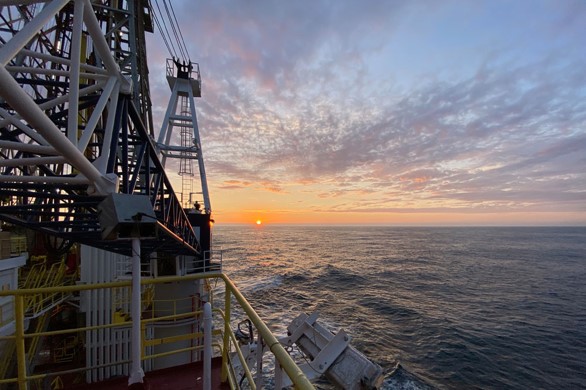On the 11th of August, drill ship JOIDES Resolution set sail from the port of Reykjavik. During the two-month cruise this autumn, the crew hopes to drill at nine locations off the coast of Central Norway. The expedition is carried out through the International Ocean Discovery Program (IODP).
The common theme for the expedition is the break-up of the Atlantic Ocean about 55 million years ago and the associated and widespread volcanism that occurred at that time. Possibly related to this episode of intense volcanism is the Paleocene-Eocene Thermal Maximum (PETM), which took place 56 million years ago.

Sverre Planke, the Co-Chief Scientist during the Norwegian Sea cruise, suggested 15 years ago that due to (igneous) thermal maturation large volumes of sedimentary strata in the Norwegian Sea area were brought into the gas kitchen in a very short time window. This may subsequently have led to the release of a huge amount of methane into the atmosphere, resulting in a rapid albeit short-lived episode of atmospheric warming.
However, there are still many unknows with regards to the understanding of the relationships between rifting, excess magmatism and paleoclimate. These are the main aspects Expedition 396 hopes to address through collecting cores from the above-mentioned sites.
There is not only a scientific interest in the drilling operations. As the map below shows, there are oil and gas exploration licences located very close to the IODP drilling sites. Although it is likely that the main target for any wells to be drilled in these licences is the pre-basalt Mesozoic succession, which may not be drilled during this expedition, the (thin) sedimentary successions sometimes found in between the successive lava flows may also be prospective (see for instance the Rosebank discovery in the UKCS).

So how has coring been progressing so far? Daily reports can be consulted through the IODP website or from geoforskning.no where a summary is being published on a regular basis.
Three sites have so far been completed – 20A, 23A and 31A, the southernmost sites of the campaign. The target depths for those wells have not been fully reached and it seems likely that the 23A hole did not fully penetrate the lava Paleocene flows as was probably hoped for. As can be seen from the cross-section above, the 23A hole would probably have been the most interesting well in terms of hydrocarbon exploration, as it may have come up with some hints on a working petroleum system below the basalts.
However, the campaign isn’t over yet and as it progresses, we will continue to report on the main findings.
HENK KOMBRINK





